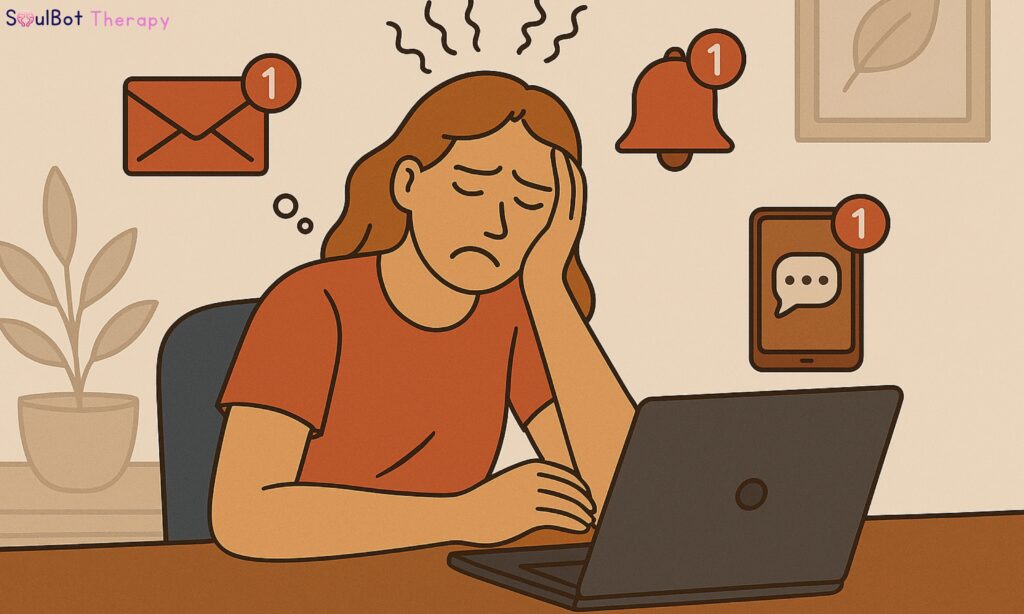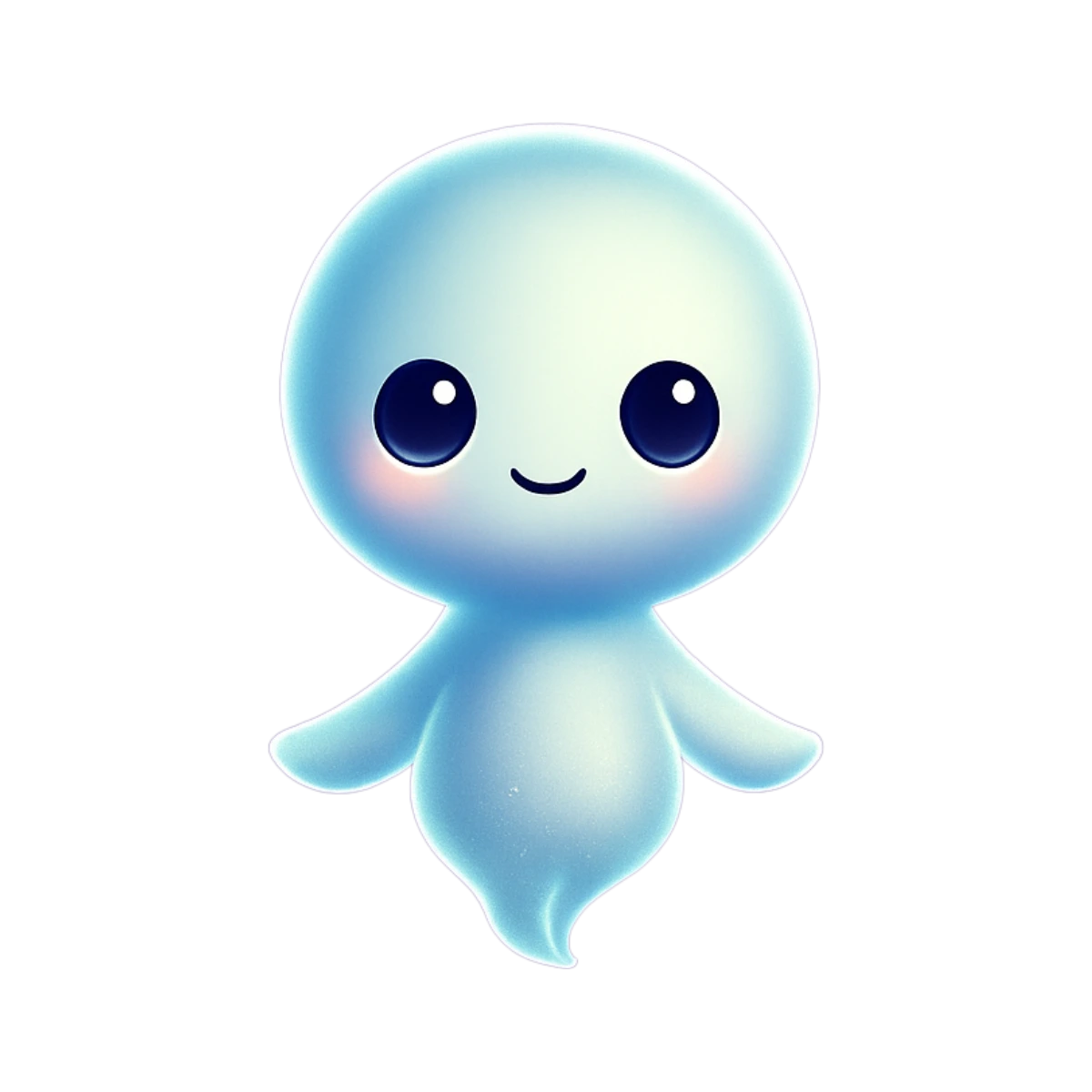Your phone lights up again. Another message. Another reminder. Another alert that pulls you out of focus.
Most of us don’t even realise how much of our attention we give away until we feel mentally drained and emotionally on edge. This constant connectivity is at the heart of what experts now call digital burnout, a state of exhaustion caused by excessive screen time, numerous notifications, and inadequate mental rest.
As our relationship with technology evolves, understanding the interaction between mental health and technology has become essential to our overall well-being.
This blog breaks down what it is, how constant notifications hijack your mental health, and how tools like SoulBot, your AI Mental Health Assistant, can help you take control of your digital life without deleting your entire existence.
📊 Did You Know?
According to a 2023 RescueTime study, the average person receives 63+ notifications per day. That’s nearly 400 distractions a week fueling stress, reducing focus, and contributing to chronic anxiety.
⚡ What Is Digital Burnout?
Digital burnout isn’t just about being tired of your phone. It’s the profound fatigue and irritability that come from always being “on.” It often manifests as restlessness, headaches, or trouble focusing after prolonged periods online.
Unlike regular stress, digital fatigue affects both your mind and body. Too much screen time and anxiety often go hand-in-hand because constant digital stimulation keeps your nervous system on alert, making it harder to relax even when you’re done working.
Signs You Might Be Experiencing Digital Burnout
If you’re wondering whether you’re feeling digital burnout, check in with yourself using these signs:
- You feel a surge of stress every time a new notification appears.
- Your sleep or concentration has worsened.
- You scroll even when you don’t want to.
- You feel detached, tired, or anxious after being online.
- You crave silence but don’t know how to disconnect.
These are some of the most common signs of digital burnout, and they can be easy to overlook until the exhaustion becomes overwhelming. Many people develop mild notification anxiety without realising how deeply it affects their focus and emotions. rload.
🔄 How Constant Notifications Fuel Anxiety?
Every alert triggers a minor dopamine release, a hit of stimulation that keeps your brain expecting the next one. Over time, this cycle can make it difficult to concentrate or stay present.
When it comes to mental health and technology, notifications act like micro-stressors. They pull you into a loop of hyper-vigilance, similar to what we experience during periods of high stress. Constant multitasking can leave you feeling mentally fragmented, anxious, or emotionally drained.
Research from the American Psychological Association shows that people who check their phones frequently report higher stress levels and notification anxiety.
Myths About Notification Anxiety
- ❌ Myth: You just need better time management.
✅ Truth: You need boundary management—time isn’t the problem, attention is. - ❌ Myth: Turning off notifications is enough.
✅ Truth: You need a full mental reset—not just silence, but intentional digital habits. - ❌ Myth: Digital burnout is a phase.
✅ Truth: Left unchecked, it can lead to anxiety disorders, insomnia, and emotional exhaustion.

🛠️ How to Reduce Digital Burnout?
If you’ve been feeling trapped in this loop, it’s time to learn how to reduce digital burnout. Here are therapist-backed strategies that can help restore balance:
- Set “notification windows.”
- Check messages or social media at specific times rather than instantly reacting to every alert.
- Use screen-time limits intentionally.
- Apps that track digital usage can help reduce digital fatigue and restore focus.
- Practice short digital detoxes.
- Simple digital detox tips, such as keeping devices out of your bedroom or taking tech-free walks, help calm your nervous system.
- Replace reactive scrolling with mindful breaks.
- Breathe, stretch, or take a few moments outdoors instead of reaching for your phone.
- Seek help when needed.
- If work stress and technology are taking a toll on your mental health, it’s okay to talk to a professional.
Making these small, consistent changes is one of the most effective ways to protect your mental energy and emotional well-being.
When to Seek Help?
If you’ve tried reducing screen time but still feel anxious, disconnected, or burnt out, you may need more structured support.
Chronic digital burnout can sometimes mask more profound anxiety or stress patterns that benefit from professional guidance. At SoulBot Therapy, our experts combine mindful psychology with digital wellness practices to help you regain clarity, balance, and calm. You don’t need to disconnect from the world, just reconnect with yourself.
🌱 Reclaiming Calm in a Digital World
Technology will always be part of our lives, but it doesn’t have to control our peace of mind. Recognising digital burnout is the first step toward change. With self-awareness, boundaries, and gentle habits, you can rebuild a healthier relationship with your devices and with yourself.
Ready to reset?
Explore guided tools and therapist-backed programs from SoulBot Therapy to create your personalised digital detox plan and feel grounded again.








